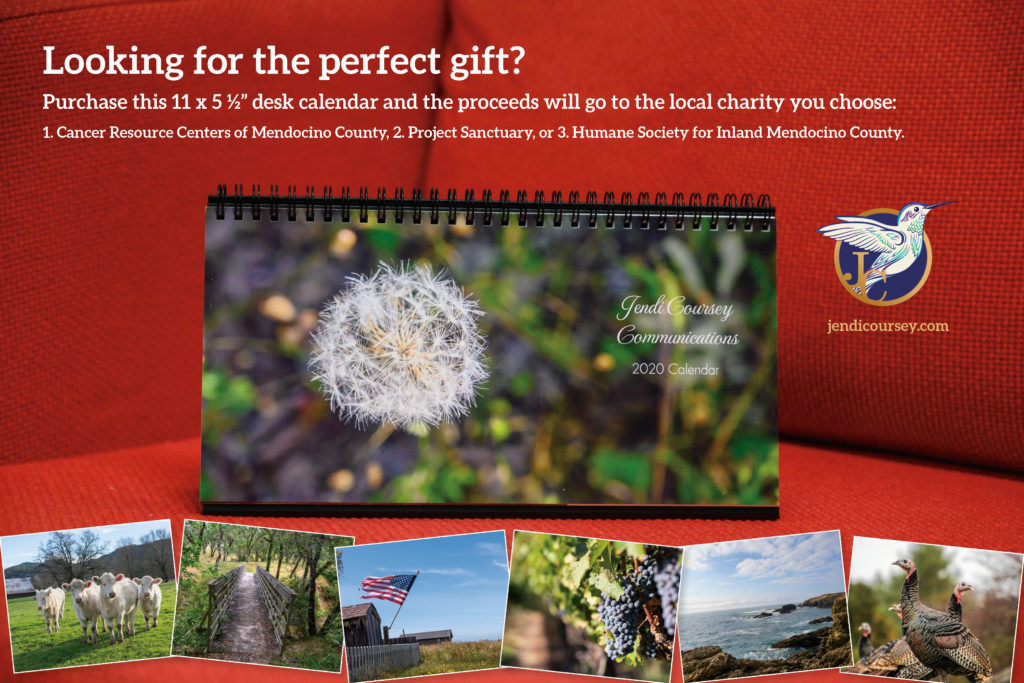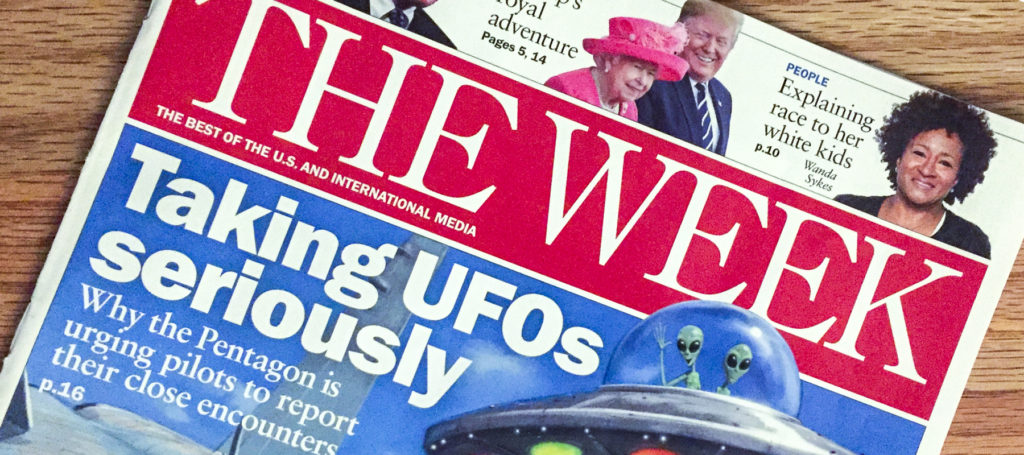-
Apr 27 2020 Being Heard Amid the Covid-19 Noise

Since the Covid-19 shelter-in-place orders went into effect, organizations have been forced to respond quickly to stress-inducing and constantly changing information. Some are succeeding brilliantly; others are failing miserably. Here are some tips to keep your audiences engaged and informed during this unusual time.
Meet People Where They Are
During a pandemic, people are emotionally exhausted and overwhelmed. If your messages ignore this and you proceed with business as usual, you will miss an opportunity to build connection—and you’ll likely fail in getting your message across.
Keep Messages Short and On Point
When people are stressed, scared, or distracted, it is essential to communicate clearly and concisely. In written communication, this means crafting messages that resonate and then breaking them into bite-sized chunks so people can absorb them. As you sit down to write, do your best to read the room, as they say. Imagine you are trying to grab and keep the attention of an employee who has a toddler in need of a diaper change. Start your message with a recognition of their challenges, a note of appreciation, and then expectations.
Also, keep things brief. It’s best to simplify complex information so people are compelled to comply with instructions or recommendations but not overwhelmed by all the details.
Communicate Proactively
Even when there’s nothing new to say, keep updates coming. Their frequency depends on your audience, of course, but ideally, you want to communicate often enough that people don’t start speculating on their own. Consider sending brief messages every few days or once a week to employees, and maybe every couple of weeks to other stakeholders.
Consider sending brief messages every few days or once a week to employees, and maybe every couple of weeks to other stakeholders.
Reinforce talking points (e.g., we’re complying with government orders to remain shuttered, but here’s how we’re supporting our employees/clients/community, or here’s what we expect for the weeks and months ahead.). You don’t have to have all the answers, but you do need to address people’s most urgent questions–even if that simply means saying something like, “We don’t know when we’ll reopen, but we have applied for the Payroll Protection Program to secure funding for those who are working from home.”
Because people are distracted and sometimes disorganized, it’s important to create a central location where people can find your most recent updates–a webpage, Facebook page, or emails with a consistent subject line such as “Covid-19 Update.” Make it easy to stay informed.
Remain Positive, Yet Honest
Possibly the most important role of communication during a crisis like this is to build trust. No one knows exactly how the Covid-19 pandemic will affect our world going forward. All we can do is to plan for the most likely scenarios with the best information we have at any given time.
And it is best to share updates with your key audiences along the way. Although it would be ill-advised to share details about every decision, it is wise to bring people along so they do not get a nasty surprise at the end. Clearly, this requires a nuanced approach, but keep in mind that the idea of protecting people by withholding information often backfires.
If you need help communicating with your key audiences right now, let us know!
-
Jan 29 2020 What New Year’s Resolution

It’s only late January, but I’m already feeling the gravity-like pull of old habits and routines taking me away from the New Year’s resolutions I committed to a few short weeks ago. I’ve read books on how to create beneficial habits and improve self-discipline, but apparently understanding the psychology of it all doesn’t transform me into a habit-creating doyenne. It seems I actually have to work at it. How irritating.
In case this is helpful to others who are already falling off the resolution wagon, here are some tips I’ve gleaned from Patrik Edblad, author of The Habit Blueprint and The Self-Discipline Blueprint, to get things back on track.
The Ingredients of Successful Habits
Edblad says there are three parts to successful habit-forming.
- A cue — The trigger that starts your habit. Example: You get an email notification.
- A routine — The habit that follows the cue. Example: You open the email.
- A reward — The benefit you gain from doing the habit. Example: You get to know what the email is about.
He makes a great argument for working with human nature, rather than trying to overcome it, by creating a reward feedback loop as part of the new habit. Most of us respond well to rewards.
To make progress toward a goal, step one is to get specific. Rather than, “I’m going to improve my diet,” the goal should be more like, “I will replace my after-lunch candy bar with an orange and two-squares of dark chocolate.”
Then, he suggests using if-then statements as cues to trigger your brain into responding properly. If [situational cue], then I will [planned response to the cue]. For example, if I want something sweet, then I will eat a piece of fruit. Is this fool-proof? Of course not, but it is helpful.
Finally, celebrate success along the way. By celebrating progress, you give yourself credit for your hard work and for moving in the right direction.
Start With Easy Wins
Another excellent piece of advice from Edblad is to start new habits by setting the bar low enough to assure success. Originally, my New Year’s resolution was to get up an hour earlier to work on my book each morning. By changing my waking time, I wouldn’t get another hour in the day, but I would get a better hour. I’m clearer in the morning. I think better.
But guess what: it’s cold and dark at 5:00 am, and the alarm wakes my husband. So, I have two options–either enlist my husband in the get-up-early plan or figure out a different time to write. I won’t give up the overall goal of publishing my book, but I may need to change my timeline and/or my methods for doing so. As long as we hold onto our big goals and continue to move toward them, it’s a win in my opinion.
Don’t Wait for No-Show Muse
Those who wait for inspiration to strike before getting to work sometimes wait for a really, really long time, getting nothing done in the meantime. Discipline and consistency are less sexy than overnight success, but they are also a far more reliable predictor of success–even if it takes a bit longer. Waiting for luck or motivation or your muse leaves success up to exterior forces. Why not put your success into your own capable hands? Set a BIG goal. Break it down into small, achievable mini-goals, and then start plugging away. It’s like a drip of water. Each drip may not seem like much, but eventually, it can carve stone.
-
Dec 23 2019 Happy Holidays

Looking for a last-minute gift-giving opportunity? We’re here to help! If you’d like to purchase a desk calendar featuring beautiful Mendocino County images for that special person on your list, send an email to kendyl@jendicoursey.com.
We will donate the entire $20 cost of the calendar to one of these local charities: 1. Cancer Resource Centers of Mendocino County, 2. Project Sanctuary, or 3. Humane Society for Inland Mendocino. Just let us know which one you’d prefer. We’re offering this charitable giving through the end of January.
We wish you peace, love, and health during this holiday season and always.
~Jendi & Kendyl
-
Nov 25 2019 Consider Another Perspective

Years ago, I pitched an idea for a hospital marketing campaign to my boss and he rejected it immediately. He said it “didn’t resonate.” I was frustrated because I had done a fair amount of research and worked with a creative team to design unconventional messages that were amusing and engaging while still respecting the serious nature of health care.
As the president of the hospital, my boss thought his knowledge of health care would allow him to recognize how this campaign would land with the target audience, which was women between 35 and 55–the healthcare decision-makers in most families.
Rather than accept his rejection, I asked if I could share the campaign with his wife, a woman he trusted and a member of the target audience. She loved it and the campaign went ahead.
We all have a unique lens through which we see the world, a perspective that has been carefully cultivated through our upbringing and experiences. No matter how hard we try, most of us cannot really know how people outside our circle feel.
If communicating well with employees, customers, and other stakeholders is important to your work, consider doing a little field testing to see if your messages are on track. Also, rather than sharing information from your perspective (e.g., “I think xyz…” or “We provide a great product or service…”), consider how your message helps members of your audience reach their goals (e.g, “Let’s join together to make this happen.” or “Here’s how this product or service helps you do or be better.”)
I was recently listening to a podcast called TED Radio Hour on the topic of how to inspire people to action. It reminded me of the importance of sharing a vision and making it clear how that vision benefits the people you most want to reach. Using positive, concrete examples rather than vague ideas helps people see and feel the reality you describe. When they can see and feel it, they are in a better position to decide whether they want to join in.
If you want help developing messages that resonate, call us.
-
May 30 2019 Get Your Press Release Published

Every week, I read a magazine called The Week. It’s a fairly balanced summary of the week’s news. I read it in order of my favorite sections: Good Week/Bad Week, It Must Be True I Read It In the Tabloids, It Wasn’t All Bad, and of course, the summary of American and international news and politics. Usually, there’s a little section called Boring But Important, where essential but often technical or dull information is shared. Today, my column falls under this category; it’s boring but important. So many people don’t know how to write a decent press release, so they don’t get the media coverage they deserve. Learning what makes a press release newsworthy isn’t the sexiest topic, but it really is essential if you want to grab the attention of the news media. The elements that make a press release newsworthy are these:
- timeliness,
- significance,
- proximity,
- prominence, and/or
- human interest.
Timeliness
One of the first questions journalists will ask themselves when they read a press release is, “Why is this important right now?” If the answer isn’t obvious, your press release has failed the timeliness test. Connecting your news to something that’s hot or trending can increase its chance of getting published. Can your topic be tied to an upcoming event? How about to a national recognition month or commemorative anniversary?
Significance
Significance sometimes trips people up. All too often, they confuse big news inside their organization with something that should get printed in the local paper–for example, when a top executive either leaves or joins an organization. Unless that executive works for a Fortune 500 company (or one of the biggest employers in the community), their arrival or departure is not significant from a community standpoint. It’s fine to share information about executive turnover in the employee newsletter, or even with customers, vendors, and partners, on your website and in social media, but it doesn’t meet the threshold for the news media.
If you’re trying to figure out whether your news is significant, consider its impact on your audience–the people who read the newspaper. Oftentimes, if your story is odd or unusual, or includes conflict or scandal, it is more likely to run.
Proximity
Proximity, either geographic or by affiliation, can make news feel more relatable and relevant. A rash of burglaries in a small town in another state is unfortunate, but not particularly newsworthy in your town. A rash of burglaries in your neighborhood, on the other hand, would certainly grab your attention (and therefore, the attention of your local paper).
Prominence
If your story involves famous people, elected officials, or local opinion leaders, it’s more likely to pique the interest of journalists. In my town, we have a very popular sheriff. If he endorses a cause, people are far more likely to support it. So, a good way to get local press is to mention that your event or cause has the support of Sheriff Allman.
Human Interest
An appeal to emotion or to the way we are all interconnected is often a great way to get press. Of course, this is subjective. Again, be sure to write to your audience. If you are writing to the weekly pet journal and you share a harrowing story of how your puppy escaped a fenced yard and was chased by coyotes only to be saved by the local mailman, you’ll likely get published. That same story probably won’t get published in the local business journal. Remember, if you have some of the other newsworthy elements and a human interest angle, you’re more likely to get published.
If you need help with the nuts and bolts of how to write a press release, click here. If you’d rather just hire someone to write your press releases, hire a publicist!
-
Apr 16 2019 Hire a Freelance Writer to Help You Strut Your Stuff: Community Benefit Reports

If your organization is a non-profit or a B-Corp, then every year or so you need to write a report that demonstrates how you’ve contributed to making the world a better place. Hiring a freelance writer to write this report can benefit you in two ways. First, you get an objective outsider who can write for a broad audience, helping to translate industry-speak when appropriate and making your key findings easy to understand. Second, you don’t have to write the report yourself!
Who to Hire
If you’re going to hire someone outside your organization to write your annual report, impact report or community benefit report, consider the following:
- Is their writing compelling and easy to read? (Don’t take their word for it–ask for samples of their work or client references.)
- Have they done this type of writing before?
- Can they take a large volume of information and distill it to its essence?
- Are they easy to work with?
- Can they meet a deadline?
- Can you afford them?
A good writer will help you create a report that does more than simply meet a regulatory requirement. Since you have to write the report anyway, why not create one that inspires donors, shareholders, board members, constituents and any other key audiences you want to reach?
The secret to any good report is a compelling narrative. You can (and should) use facts and figures to help tell the story, but please, for the love of God, tell an interesting story.
How to Hire Them
If you’ve never hired a freelancer to write a report, here’s how it’s done:
- Give a brief overview of the project (share past reports or
examples from others in the industry if you have them). How will this information be shared? Online? Print? Both? Do you need a slide deck and a narrative? - Explain any regulatory requirements.
- Determine the scope of the project: define who will provide what information to whom and when. Is the writer doing any research or will all relevant material be provided?
- Is the writer responsible for working with a graphic designer to provide the finished product or are you hiring the designer?
- Establish the timeline. Is there a regulatory deadline? Do you want printed copies in hand for a conference or annual meeting? Work
backward from there to determine milestones and progress reports. - Agree to a budget.
When to Hire Them
Like many things, writing is best done without the proverbial gun to one’s head. If you are a non-profit hospital, for example, you know you have to publish a community benefit report every three years. Don’t wait until the month before it’s due to
hire a writer.The Whole Shebang
When I write this type of report for clients, I like to offer a comprehensive package, which includes interviews and research, writing, photography, data analysis, and graphic design. I love to meet in advance and plan periodic photoshoots for big events, get quotes from VIPs when it’s convenient for them, and capture data when it’s fresh and available. If this sounds like a far easier process than the one you’re currently using, let’s talk. Maybe I can help.







